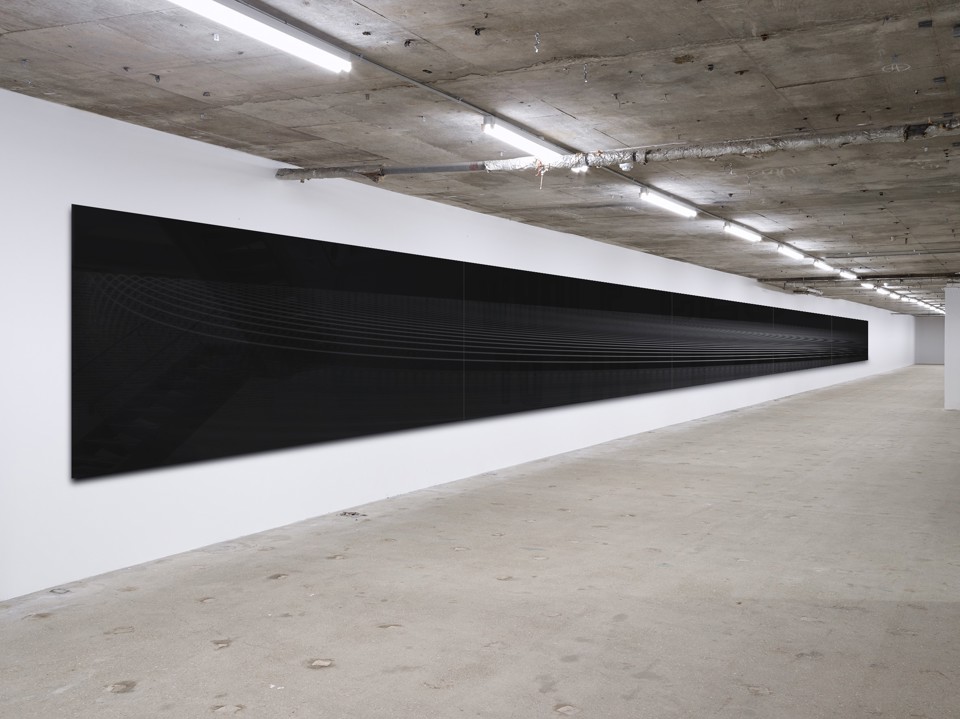The predominant theory of the origin of the universe is the Big Bang.
John C. Mather
Unfettered curiosity and a drive to search for the essence of our existence are what inspire German photographer Chris Tille. He has always been fascinated by the sublimeness of nature and miraculous origins of the universe.
However, for Tille it is about much more than just the pure beauty of fleeting natural phenomena. His visions contemplate major topics affecting humanity, including history, science, and religion. His photographic cycles are characterised by an intensive scrutiny of certain astronomical events, which he visualises using painstaking techniques. By doing so, he has been able to capture the beginning of time with his Big Bang cycle. This series is an artistically elegant and logically precise presentation of astrophysical facts, rather than a vision of the artist himself. His studies are based on the impressive scientific developments of American physicist John G. Cramer, who in 2013 released audio files of the Big Bang, communicating data of the cosmic microwave background from the European Space Agency's Planck satellite mission. The sound cloud represents what the Big Bang would have sounded like during the event.
Much like the images of distant galaxies, black holes, and supernovae, their optical interpretations are created from gathered data being collaged together. Cramer’s auditory, too, is a reading of resonances perceptible to human hearing. Tille’s efforts rest within this tradition, and in this instance he translated Cramer’s audio files of the Big Bang into pictorial metaphors, where we hear the birth of the known universe.
It involved two years of experimentation until he found a method of translating Cramer’s soundscapes into light, which he then captured on photographic paper. Tille explaines, “I stripped down the tones deriving from the frequency and the volume of the recordings into pictorial impulses and discovered that loud noises with a low frequency produced light-coloured pixels, whilst quiet interferences with a high f requency resulted in grey-coloured pixels.” And for an awe-inducing effect, he depicted the cumulative data at large scale in a timeline format, where waves flow out from an invisible epicenter, expanding into infinity. Indisputably, when standing in front of Tille’s Big Bang photographs, we are reminded of the inner workings of the cosmos and creation itself. The works take viewers on a pictographic journey through space and time, back to the Big Bang, and as the concept describes, that is the point when the universe came into being from a single, unimaginably hot and dense element (aka a singularity) more than 13 billion years ago. The sudden, forceful explosion of more than millions of solar masses did not occur in an already existing space. The event rather initiated the expansion - cooling off space itself.
Tille continues in his engaging manner, “How can we even begin to conceive the birth of the universe, and even more so what it looked like or the moment before there was time, before there were eyes to see? Over more than thirteen billion years ago, the ‘Big Bang’ created not only the dimensions of time and space, but everything known to the human race, from light to life. It is our story of origin, and as it is impossible to fully comprehend, by the same token it is absolutely spellbinding.”
The BBA Artist Prize 2021 exhibition is taking place at the Kühlhaus in Berlin, a six hundred square meter exhibition site, from 24 June – 30 June 2021, organised by BBA Gallery. Ten to fifteen shortlisted artists were selected from the longlist in early April 2021, and shortlisted artists are invited to exhibit in a group show and eligible to win the four prizes.
Probably the most striking entry into the competition is Chris Tille’s shortlisted, nearly nine-meter-long photograph, entitled ‘Big Bang’, a key work in his repertoire. Tille has long ceased to engage in classical photography and decided instead to nourish his fondness for deciphering astrophysical data, signals, and codes through complex processes. He often collaborates with the Max Planck Institute, which provides him with continuous scientific recordings and at times even grants him access to a supercomputer that provides images of the cosmic microwave background radiation.
Tille has truly found his language - apprehending the entire perspective or big picture and letting it culminate in an almost overpowering simplicity. He is guided by the Russian and Soviet writer Maxim Gorky, who said, "Just as science is the intellect of the world, art is its soul." Tille added, "Where science turns to art, the universe reveals itself."
Chris Tille was born in Munich, Germany, in 1971 and educated in Innsbruck, Austria. During his prolific career, he has won several awards and exhibited worldwide.
Big Bang, 2014, photo exposure on Ilford paper, limited edition of 6 + 2 AP, photo exposure on Fuji paper, the last available copy of 6 edition, the first 5 editions are held in well-known private collections.
Newsletter:
Courtesy and ©Chris Tille and Renée Pfister, 2021.
Video:
Courtesy and ©Chris Tille, https://www.bensound.com/royalty-free-music/track/evolution-epic-nature (music) and Renée Pfister (text), with the assistance of Eleonora Guidi, 2021. All rights reserved
